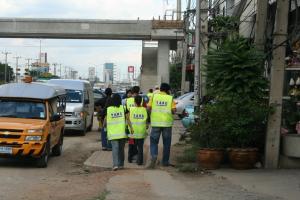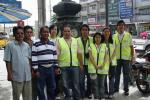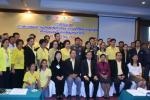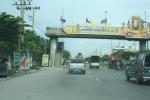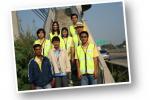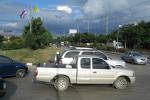Thailand Accident Research Center
ศูนย์วิจัยอุบัติเหตุแห่งประเทศไทย
Road Safety Audit of Hazardous Locations on National Highways
Road accident becomes a serious problem in Thailand for decades. Every year, over ten thousand people lost their life on the road, and over a hundred thousand suffered from the disabilities and injuries. It was epidemic indeed. Even though the accidents occurred in the nature of unexpected time and places, there are significant numbers of crashes occurred at the same location which had raised the issue through local people and travelers. Without proper inspection on those locations with frequently accidents occurred, problems still exist and continuously lead to the loss of life due to road accidents.
According to the national statistics in year 2003, the national highways share a large proportion of road sections in Thailand. The total length of national highways, under the responsibility of the Department of Highways, was 52,997 kilometers. It was found that, since 1998, more than two thousand people were killed on national highways each year and more than ten thousand people were injured from the road crashes.
To investigate the series of accident occurred at each specific location, it is necessary to identify the real problems by using proper treatment program. Considering that the social contribution is one of the major management policies of the company, the Toyota Motor Thailand Co., Ltd. which is a private industrial sector should play a major role in providing safety environment for all road users. The Toyota social contribution plan could in turn prevent any further accident, by collaborating with the Thailand Accident Research Center (TARC) to perform a “Road Safety Audit” on the national highways in Thailand. Four major highways (No. 1, 2, 3, and 4) passing through four selected provinces located near Bangkok will be audited by the TARC according to the agreement with Toyota.
Accident data on all major highways was re-analyzed to determine the number of accidents in each kilometer, and then the black spots were identified. The black spot is defined as the location at which more than three casualty crashes occur within one year for the consecutive 3-5 years. The black spots of each one km-sections were ranked based on the number of crashes. The road sections with the number of accidents higher than 10 casualty crashes during 2004-2006 were then prioritized as the top-20 black spots on each highway.
However, the scope of this project covered only the highways in selected provinces locating around Bangkok areas where the traffic volume is observed to be high especially during the festivals. The sections for highway No.1, 2, 3, and 4 that were audited by TARC are those highways in Ayutthaya, Saraburi-Nakhon Ratchasima, Samut Prakan, and Nakhon Pathom.
The Highway Districts, Department of Highways who are responsible for the roads in selected provinces acted as a client, and was supported by Toyota Motor Thailand Co., Ltd in terms of knowledge for providing the road safety audit. Thailand Accident Research Center (TARC) served as an audit team. The role of the auditor is to provide independent advice in the form of written recommendations. The advice is then considered by the client and a formal decision is made by them on whether or not to adopt each of the recommended safety alterations.
In addition to the knowledge support in road safety audit process and recommendations for the black spot improvement to the Highway District, Toyota supported knowledge dissemination to different parties whose work related to road safety in that province such as police officers, government officers, local community leaders, academicians, and other private agencies (for example, Toyota Dealer representatives). The knowledge dissemination was in a form of training or seminar which was organized by TARC team. Once they were trained, these officers can apply the acquired knowledge directly for the benefits of their provinces.

